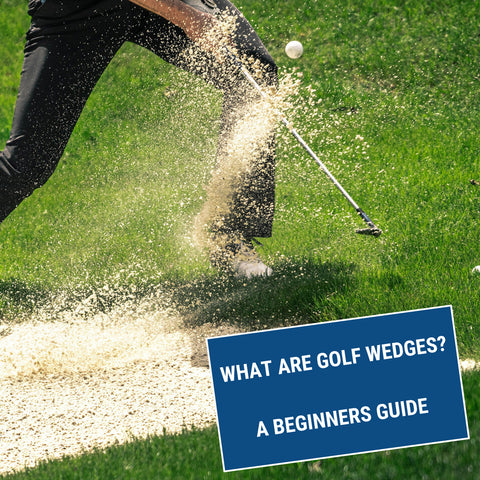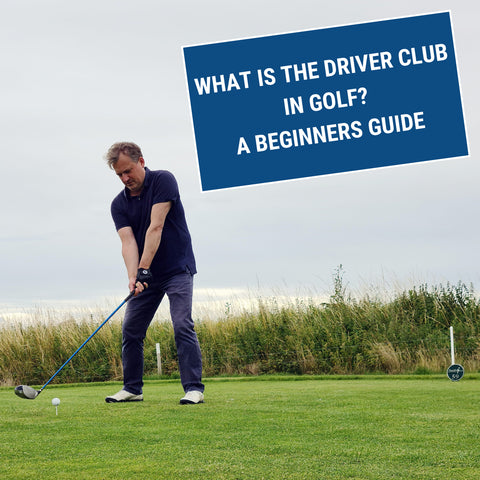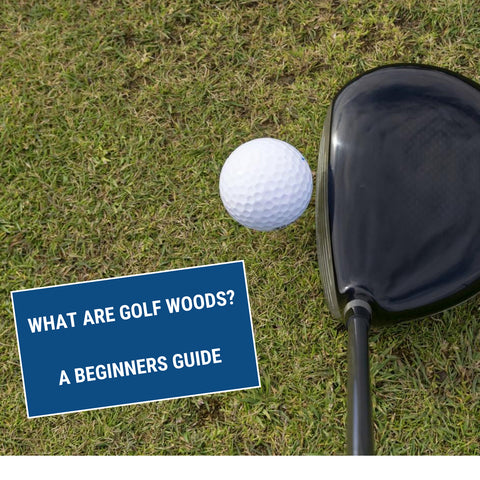Table of Contents
- Understanding Golf Wedges
- Exploring Different Wedges
- Using Golf Wedges Effectively
- Choosing the Right Wedge
- Enhancing Short Game Skills
- Decoding Golf Club Markings
- Summary
- FAQ
When it comes to mastering the game of golf, understanding the significance of golf wedges is paramount. These compact yet highly specialized clubs are the secret weapons in a golfer's toolkit, especially when it comes to conquering the short game. Unlike their longer counterparts, wedges are designed to provide precision and finesse, making them essential for executing delicate shots that can make or break your performance on the course.
In this comprehensive guide, we delve deep into the world of golf wedges, unravelling their nuances, roles, and techniques. Our goal is to empower you with the knowledge needed to make informed decisions about your club selection and elevate your golfing prowess, particularly in the realm of wedge play.
Understanding Golf Wedges
| Key Aspect | Description |
|---|---|
| Loft Variation | Wedges have higher loft angles compared to other clubs, allowing for high, short shots that stop quickly on greens. |
| Bounce Design | Wedges feature a pronounced bounce angle, preventing digging in soft conditions and aiding in sand shots. |
| Short Shaft | Wedges typically have shorter shafts, offering control and precision needed for delicate shots around the green. |
| Clubhead Shape | Wedges often have broader and more compact clubhead designs, enhancing accuracy and versatility in tight spaces. |
| Specialized Grinds | Wedges may feature unique sole grinds to optimize turf interaction in various lies and playing conditions. |
| Spin Generation | Wedges have grooves designed to generate spin, allowing players to control the ball's flight and stopping power. |
| Short Game Focus | Wedges are integral to the short game, providing precise tools for chips, pitches, and bunker escapes. |
| Versatility | Wedges can adapt to a wide range of shots and situations, making them indispensable for creativity on the course. |
Definition and Purpose
Golf wedges are a family of clubs specifically tailored to handle the delicate shots that occur around the green and within short distances from the fairway. Their primary purpose is to help golfers navigate challenging situations with finesse, accuracy, and control. Whether you need to escape a bunker, execute a precise chip shot, or finesse a delicate lob over an obstacle, wedges are your go-to clubs for the job.
Types of Golf Wedges
-
Pitching Wedge: This wedge serves as a golfer's introduction to the world of specialized wedges. With a moderate loft angle, usually ranging from 44 to 48 degrees, the pitching wedge is a versatile club suitable for approach shots and controlled trajectories.
-
Sand Wedge: As the name implies, the sand wedge is engineered to help you extricate your ball from sandy hazards. It boasts a distinctive design, with a wide sole and a higher bounce angle. Loft angles typically range from 54 to 58 degrees.
-
Gap Wedge: Bridging the distance between the pitching wedge and sand wedge, the gap wedge fills a critical yardage gap. Sporting loft angles of around 50 to 54 degrees, this wedge excels at those in-between distances that demand precision.
-
Lob Wedge: The lob wedge is the maestro of finesse shots. With loft angles ranging from 58 to 64 degrees, it's your go-to for high, short shots that require pinpoint accuracy, making it an essential tool for tricky shots around the greens.
| Type of Wedge | Loft Angle Range | Primary Use | Notable Features |
|---|---|---|---|
| Pitching Wedge | 44° - 48° | Approach shots, controlled shots | Versatile for various distances on the fairway |
| Sand Wedge | 54° - 58° | Bunker escapes, high shots | Wide sole, high bounce angle for sand interaction |
| Gap Wedge | 50° - 54° | In-between distances | Fills yardage gap between pitching and sand wedges |
| Lob Wedge | 58° - 64° | High, soft shots | High loft for finesse around the green |
Distinction from Other Clubs
What sets golf wedges apart from other clubs in your bag is their unique loft angles and specialized designs. While drivers and long irons are engineered for distance, wedges are all about precision and control, making them indispensable for the short game. Their high loft angles and specific bounce angles allow you to generate backspin, control trajectory, and tackle tight spots with confidence.

Exploring Different Wedges
When it comes to golf wedges, versatility is key. Let's take a closer look at each type of wedge—pitching, sand, gap, and lob—to uncover their unique qualities and how they play a crucial role on the golf course.
Pitching Wedge
The pitching wedge is often the golfer's gateway to the world of specialized wedges. With a loft angle typically ranging from 44 to 48 degrees, it's the go-to club for approach shots. Its moderate loft provides a balance between distance and control, making it ideal for tackling shots from the fairway or semi-rough. As you progress in your game, the pitching wedge becomes a versatile tool for an array of shots, ensuring you're always prepared for various situations.
Sand Wedge
Moving on to the sand wedge, this club has a specific mission: to rescue your ball from bunkers with finesse. Boasting loft angles of around 54 to 58 degrees and a distinctive wide sole, the sand wedge is designed to effortlessly glide through sand, allowing you to execute those challenging bunker shots. Its higher bounce angle prevents the club from digging into the sand, offering a smoother and more controlled exit from sand traps.
Gap Wedge
The gap wedge steps in to fill the yardage gap between your pitching wedge and sand wedge. Ranging from 50 to 54 degrees of loft, this wedge is perfect for those in-between distances that demand precise control. Whether you're facing an approach shot that's a bit too long for a pitching wedge or a bit too short for a sand wedge, the gap wedge comes to the rescue, allowing you to fine-tune your shots with accuracy.
Lob Wedge
Last but certainly not least, the lob wedge is the artist's brush of the golfer's toolkit. With loft angles ranging from 58 to 64 degrees, this wedge allows you to create high, short shots with exceptional finesse. Perfect for clearing obstacles, executing delicate chips, and landing softly on the green, the lob wedge lets you tackle challenging scenarios with a touch of artistry.
Loft Degrees and Bounce Angles
Loft degrees and bounce angles play a pivotal role in the performance of golf wedges. Loft determines the trajectory and distance of the shot, with higher loft resulting in higher shots that land more softly. Bounce angle, on the other hand, influences how the club interacts with the turf. Higher bounce angles are well-suited for soft turf and sand, while lower bounce angles are preferable for firmer conditions.
Using Golf Wedges Effectively
As you stand before a challenging shot, the right wedge and the right technique can make all the difference. Let's dive into how to make the most of your golf wedges, from a variety of shots to mastering the art of spin.
Pitching, Chipping, and Bunker Shots
Mastering the various shots around the green is a hallmark of a skilled golfer. The pitching wedge comes into play for approach shots, while the sand wedge shines in sand bunkers. But that's not all—your wedge repertoire extends to chipping, where the right choice can mean the ball landing close to the pin or even rolling into the hole.
Difference Between a Wedge and a Pitching Wedge
A wedge is a category of golf clubs designed for short shots and precise control, while a pitching wedge is a specific type of wedge with a moderate loft angle. The term "wedge" encompasses various types like sand, gap, and lob wedges, each with unique characteristics tailored to specific shots. On the other hand, the pitching wedge is more of a transitional club, bridging the gap between irons and wedges.
Using a 9 Iron as a Pitching Wedge
While it's possible to use a 9 iron for shots typically suited for a pitching wedge, the clubs are designed differently. The pitching wedge usually has a higher loft angle, enabling it to produce higher shots with softer landings. Using a 9 iron as a substitute may result in longer shots with less control over trajectory and distance.
High Handicapper and the 60-Degree Wedge
For a high handicapper, a 60-degree wedge can be both a blessing and a potential challenge. While this high-lofted wedge offers versatility around the greens, its loft can make it harder to control for players still honing their skills. It's essential to practice extensively with a 60-degree wedge to capitalize on its advantages without sacrificing consistency.
Bending Wedge Loft Angles
Adjusting wedge loft angles through bending can have a significant impact on your game. By increasing the loft angle, you can achieve higher shots with softer landings, while decreasing it generates lower trajectories. However, bending wedges can also alter bounce angles and affect how the club interacts with the turf. Consulting a professional club fitter is recommended to ensure the desired results without compromising performance.
Choosing the Right Wedge
Selecting the appropriate golf wedge goes beyond personal preference. Consider the following factors to make informed decisions:
Skill Level and Playing Style
Your skill level plays a crucial role in wedge selection. High handicappers may benefit from a more forgiving sand wedge, while skilled players might opt for a lob wedge to enhance their short game finesse. Your playing style—whether you favour aggressive shots or finesse shots—also influences wedge choice.
Determining Yardages and Shot Trajectories
Each wedge has a specific role based on yardage and shot trajectory. Pitching wedges are suitable for approach shots, gap wedges tackle in-between distances, and sand wedges handle bunker escapes. Mastering your yardages and understanding how different wedges affect shot trajectories will equip you to confidently choose the right club for each situation.
Enhancing Short Game Skills
The short game is often referred to as the "scoring game," and it's where golf wedges truly shine. Let's explore the significance of honing your short game skills and delve into techniques for handling challenging lies around the green.
Importance of Short Game Practice
Mastering the short game can significantly lower your scores and elevate your overall performance. A proficient short game allows you to recover from difficult situations, save strokes around the green, and turn potential bogeys into pars or even birdies. Investing time in practicing your wedge shots, chips, and pitches can lead to dramatic improvements in your golf game.
Techniques for Challenging Lies
Tight Lies: When dealing with tight lies, such as firm fairways or closely mown areas, focus on striking the ball cleanly to avoid excessive turf interaction. Position the ball slightly back in your stance, use a steeper angle of attack, and keep your wrists firm to create clean contact.
Various Lies Around the Green: Different lies demand specific techniques. For shots from fluffy lies, open the clubface to prevent the club from digging into the turf. In thicker grass, use a more square clubface and a slightly steeper angle of attack. Experimentation and practice are key to mastering the nuances of different lies.
Decoding Golf Club Markings
Golf club markings might seem like cryptic symbols, but they hold valuable information about each club's purpose. Let's demystify the common markings found on golf clubs, shedding light on their meanings.
"P" for Pitching Wedge and "W" for Gap Wedge
The "P" on a golf club stands for pitching wedge. As we discussed earlier, the pitching wedge is a versatile club used for a variety of approach shots. It's a reliable go-to for many golfers due to its balanced loft and control.
The "W" on a golf club signifies the gap wedge. This wedge fills the gap in yardage between your pitching wedge and sand wedge. Its loft angles make it ideal for shots where precision is key.
Understanding these markings helps you quickly identify the purpose of each club in your bag and make more informed decisions on the course.
Summary
As we conclude our exploration of golf wedges, let's take a moment to recap the essential insights gained throughout this comprehensive guide. From understanding the various types of wedges to uncovering their unique characteristics and mastering techniques for effective use, you've embarked on a journey that will undoubtedly enhance your golf game.
Recap of Key Points
-
Types of Golf Wedges: We've delved into the four primary types of golf wedges—pitching, sand, gap, and lob—each designed to excel in specific scenarios on the course.
-
Usage and Techniques: You've learned how to harness the power of golf wedges for an array of shots, including approach shots, bunker escapes, and precise chips. Techniques like hitting down on the ball and generating spin have become valuable tools in your arsenal.
-
Wedge Selection: Exploring factors such as skill level, playing style, and yardages has equipped you to make informed decisions when selecting the right wedge for each situation.
-
Short Game Mastery: Recognizing the significance of the short game and practicing techniques for tight lies and various lies around the green has opened doors to improving your scoring game.
-
Club Markings: Decoding common markings on golf clubs, such as "P" for pitching wedge and "W" for gap wedge, has provided you with insights into the purpose of each club.
Embrace the Journey
As you step onto the golf course armed with newfound knowledge about golf wedges, we encourage you to embrace the journey of exploration and experimentation. Each shot presents an opportunity to apply what you've learned, refine your skills, and witness first-hand the impact that well-chosen wedges can have on your game.
FAQ
Q1: What's the main purpose of golf wedges?
A: Golf wedges are designed to excel in the short game, helping golfers navigate shots within close distances to the hole. They offer precision, control, and versatility, making them indispensable for chipping, pitching, and bunker escapes.
Q2: How do I use a sand wedge effectively in bunkers?
A: To use a sand wedge in bunkers, position the ball slightly forward in your stance, open the clubface, and swing with a smooth tempo. Aim to make contact with the sand before the ball, allowing the club's bounce angle to lift the ball out of the bunker with a high trajectory.
Q3: What's the difference between a pitching wedge and a wedge?
A: A pitching wedge is a specific type of wedge with a moderate loft angle, commonly used for approach shots. "Wedge" is a broader category that encompasses various types like sand, gap, and lob wedges, each serving unique purposes on the course.
Q4: Can I use a 9 iron as a pitching wedge?
A: While it's possible to substitute a 9 iron for a pitching wedge, they're designed differently. A pitching wedge typically has a higher loft angle, providing greater control and loft for approach shots.
Q5: Do high handicappers need a 60-degree wedge?
A: While a 60-degree wedge offers versatility, it can also be challenging to control for high handicappers. Extensive practice is essential to harness its benefits without sacrificing consistency.
Q6: Can I adjust the loft angle of my wedges?
A: Yes, loft angles can be adjusted through bending, but it's recommended to consult a professional club fitter. Changing loft angles can affect bounce angles and turf interaction, which impact performance.
Q7: How do I know which wedge to use for different yardages?
A: Mastering yardages with your wedges comes with practice. Experiment on the driving range to understand the distances you achieve with each wedge, and take notes to make informed decisions on the course.
Q8: What do the markings "P" and "W" on golf clubs mean?
A: "P" stands for pitching wedge, a versatile club used for approach shots. "W" signifies the gap wedge, designed to cover yardages between the pitching wedge and sand wedge.
Q9: Are wedges only for advanced players?
A: Wedges are valuable for players of all skill levels. While advanced players can leverage their precision, high handicappers benefit from their forgiveness and versatility around the green.
Q10: Can I use a lob wedge for full swings?
A: While possible, lob wedges are primarily designed for finesse shots around the green due to their high loft angles. Using them for full swings can result in higher shots with shorter distances.
This article is part of our wider series on the different types of golf clubs.



